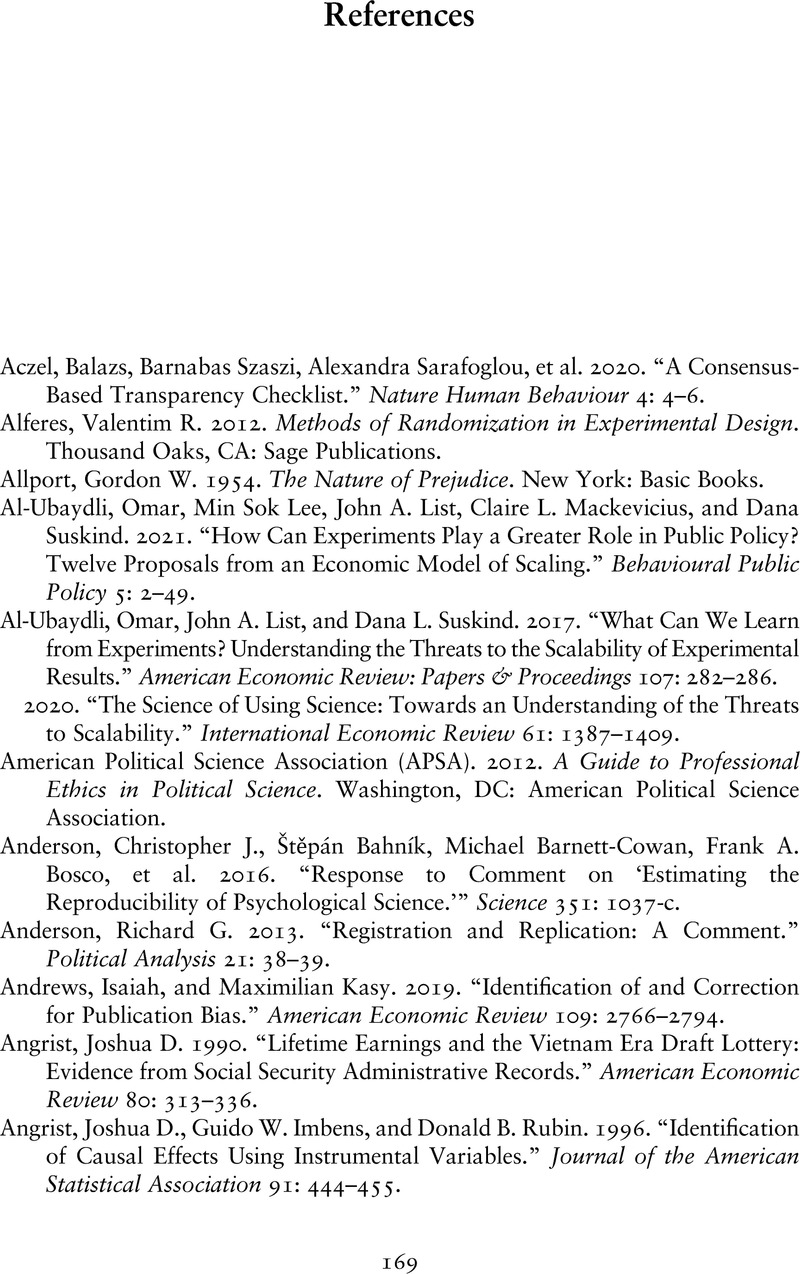Book contents
- Experimental Thinking
- Experimental Thinking
- Copyright page
- Dedication
- Contents
- Figures
- Tables
- Preface
- Acknowledgments
- 1 Why a Primer on Social Science Experiments?
- 2 The Scientific Process and How to Think about Experiments
- 3 Evaluating Experiments
- 4 Innovations in Experimental Designs
- 5 What to Do before, during, and after an Experiment
- 6 Designing “Good” Experiments
- References
- Index
- References
References
Published online by Cambridge University Press: 12 May 2022
- Experimental Thinking
- Experimental Thinking
- Copyright page
- Dedication
- Contents
- Figures
- Tables
- Preface
- Acknowledgments
- 1 Why a Primer on Social Science Experiments?
- 2 The Scientific Process and How to Think about Experiments
- 3 Evaluating Experiments
- 4 Innovations in Experimental Designs
- 5 What to Do before, during, and after an Experiment
- 6 Designing “Good” Experiments
- References
- Index
- References
Summary

- Type
- Chapter
- Information
- Experimental ThinkingA Primer on Social Science Experiments, pp. 169 - 200Publisher: Cambridge University PressPrint publication year: 2022

